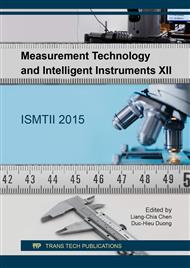[1]
T. P. Chow, V. Khemka, J. Fedison, N. Ramungul, K. Matocha, Y. Tang, and R. J. Gutmann, Solid-State Electronics, 44 (2000) 277-301.
DOI: 10.1016/s0038-1101(99)00235-x
Google Scholar
[2]
T. Morita, S. Tamura, Y. Anda, M. Ishida,Y. Uemoto, T. Ueda, T. Tanaka, and D. Ueda, IEEE Twenty-Sixth Annual of Applied Power Electronics Conference and Exposition (APEC), 2011, 481-484.
DOI: 10.1109/apec.2011.5744640
Google Scholar
[3]
J. P. Ibbetson, P. T. Fini, K. D. Ness, S. P. DenBaars, J. S. Speck, and U. K. Mishra, Appl. Phys. Lett., 77 (2000) 250-252.
Google Scholar
[4]
N. Ikeda, J. Li, and S. Yoshida, Proceedings of 16th International Symposium on Power Semiconductor Devices and ICs (ISPSD), 2004, 369-372.
Google Scholar
[5]
J. Kuzmik, IEEE Electron Device Lett., 22 (2001) 510-512.
Google Scholar
[6]
T. J. Anderson, M. J. Tadjer, M. A. Mastro, J. K. Hite, K. D. Hobart, C. R. Eddy, Jr., and F. J. Kub, IEEE Electron Device Lett., 30 (2009) 1251-1253.
DOI: 10.1109/led.2009.2033083
Google Scholar
[7]
Y. Cai, Y. Zhou, K. M. Lau, and K. J. Chen, IEEE Transactions on Electron Devices, 53 (2006) 2207-2215.
Google Scholar
[8]
T. Mizutani, M. Ito, S. Kishimoto, and F. Nakamura, IEEE Electron Device Letters, 28 (2007) 549-551.
Google Scholar
[9]
Y. Uemoto, M. Hikita, H. Ueno, H. Matsuo, and H. Ishida, IEEE Transactions on Electron Devices, 54 (2007) 3393-3399.
DOI: 10.1109/ted.2007.908601
Google Scholar
[10]
J. Wu, W. Walukiewicz, K. M. Yu, J. W. Ager, S. X. Li, E. E. Haller, H. Lu, and W. J. Schaff, Solid State Communications, 127 (2003) 411-414.
DOI: 10.1016/s0038-1098(03)00457-5
Google Scholar
[11]
Y. H. Chang, H. C. Chiu, W. H. Chang, J. Kwo, C. C. Tsai, J. M. Hong , M. Hong, J. of Crystal Growth, 311 (2009) 2084-(2086).
DOI: 10.1016/j.jcrysgro.2008.11.011
Google Scholar
[12]
Y. Taur and T. H. Ning, Fundamentals of modern of VLSI Device, 2nd ed., Cambridge, New York, (2009).
Google Scholar
[13]
O. Ambacher, J. Smart, J. R. Shealy, N. G. Weimann, K. Chu, M. Murphy, W. J. Schaff, and L. F. Eastman, J. of Appl. Phys., 85 (1999) 3222-3233.
Google Scholar
[14]
V. Gorge, Z. Djebbour, A. Migan-Dubois, C. Pareige, C. Longeaud, K. Pantzas, T. Moudakir, S. Gautier, G. Orsal, P. L. Voss, and A. Ougazzaden, Appl. Phys. Lett. 99 (2011) 062113.
DOI: 10.1063/1.3624598
Google Scholar
[15]
N. Ketteniss, H. Behmenburg, H. Hahn, A. Noculak, B. Holländer, H. Kalisch, M. Heuken, and A. Vescan, IEEE Electron Device Lett., 33 ( 2012) 519-521.
DOI: 10.1109/led.2012.2184735
Google Scholar


